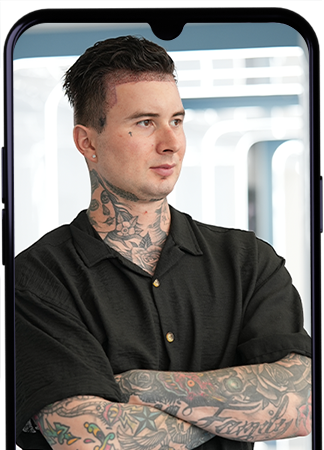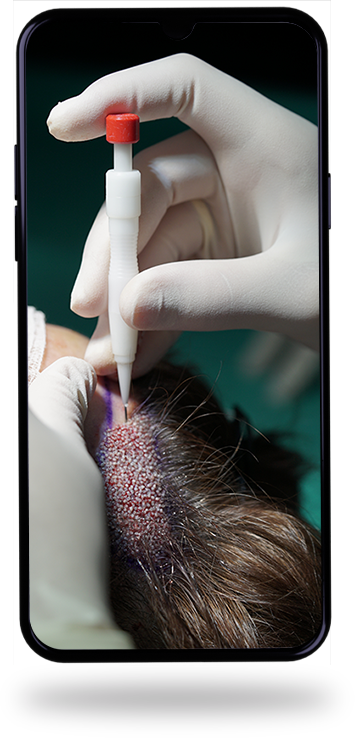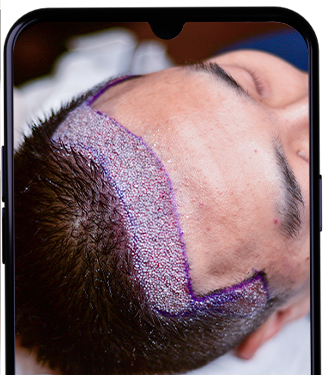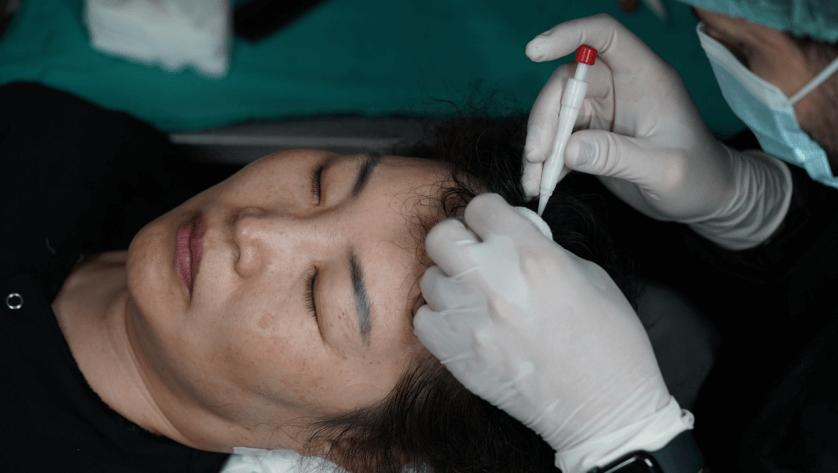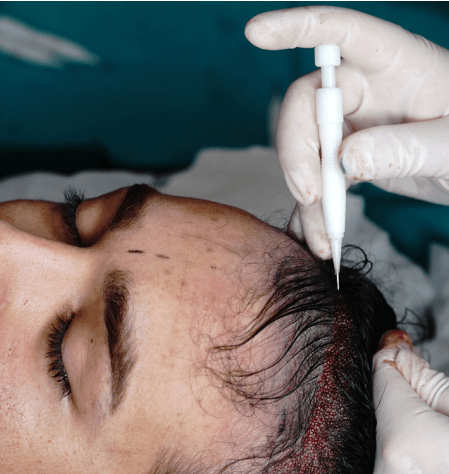무삭발 모발 이식
무삭발 모발 이식은 어떻게 진행됩니까?
무삭발 모발 이식 가장 혁신적인 모발 회복 방법 중 하나로, 특히 긴 머리나 중간 길이 머리를 가진 사람들에게 적합한 기술입니다. 다른 시술 방법은 시술 전 두피를 완전히 면도해야 하지만, 면도 없는 이식은 시술 중에도 환자가 기존 헤어스타일을 유지할 수 있도록 합니다.이 기술에서는 일반적으로 후두부나 측두부 등 기증 부위만 면도하며, 모낭을 채취하는 동안 나머지 머리카락은 그대로 남아 눈에 잘 띄지 않습니다. 따라서 완전히 면도하는 방식에서 발생하는 불편한 재성장 기간을 피할 수 있습니다.무삭발 모발 이식의 주요 장점 중 하나는 외모 개선입니다. 또한, 면도된 부위를 주변 모발이 자연스럽게 가려주어 대부분의 사람들은 시술 부위를 알아차리기 어렵습니다. 이는 회복 기간 동안 외모에 민감한 사람들에게 매우 유용합니다. 시술 직후에도 환자들은 자신감이 상승하고, 외모에 대한 걱정을 덜 느낄 수 있습니다. 이 기술은 스타일을 유지하면서 모발을 회복하고자 하는 남녀 모두에게 점점 더 인기를 얻고 있습니다.
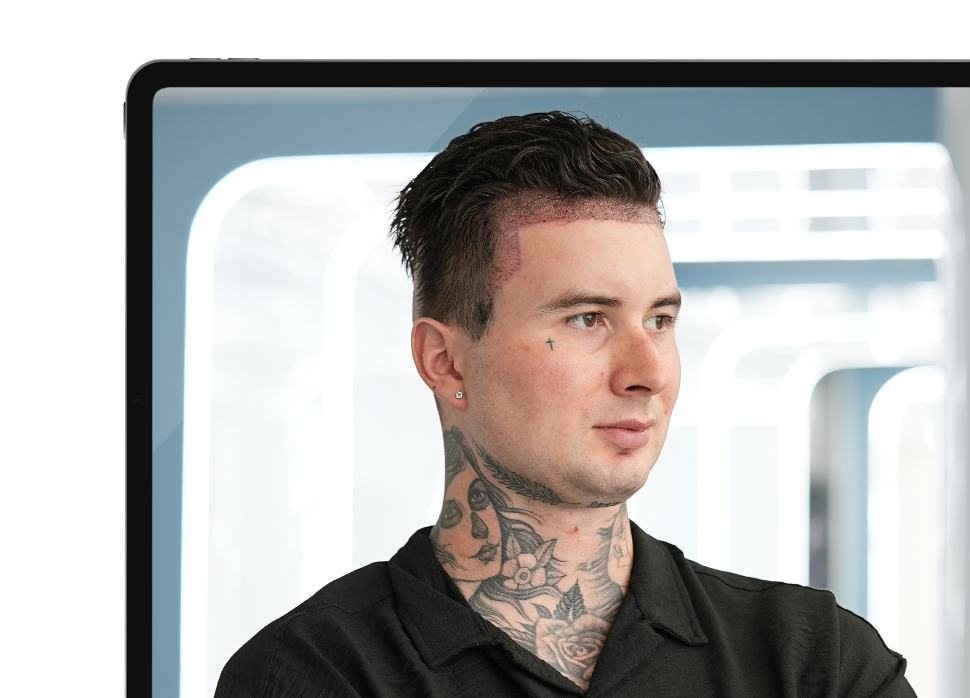
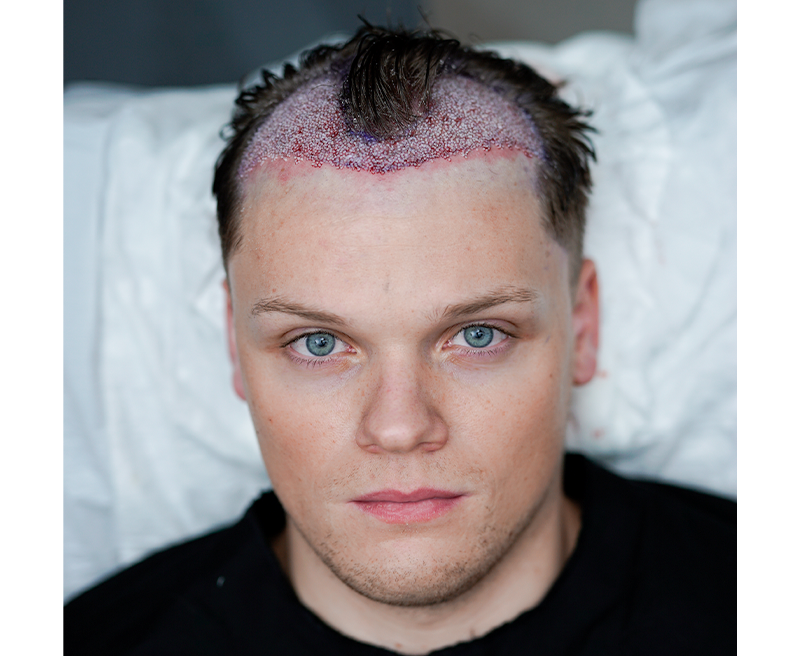
>> 무삭발 모발 이식 대상
무삭발 모발 이식은 정밀성과 효율성으로 잘 알려진 DHI 방식으로 진행됩니다. 이 기술은 두피 기증 부위에 작은 ‘창’을 만들어 모낭을 채취하는 방법입니다. 특히 여성들에게 선호되는 방식으로, 채취 부위가 거의 눈에 띄지 않아 보다 은밀하게 시술할 수 있습니다.
- 다음과 같은 경우 무삭발 모발 이식이 적합할 수 있습니다:
- 후퇴 헤어 라인을 가진 개인
- 탈모 여성
- 특정 부위에 탈모가 있는 사람
- 전반적으로 무삭발 모발 이식은 다양한 탈모 상태에 대응할 수 있는 유연한 솔루션을 제공하며, 후보자의 개별적인 요구를 충족시키면서 심미적 결과에 중점을 둡니다.
무삭발 모발 이식의 장점
무삭발 모발 이식은 모발 밀도를 높이고자 하는 사람들에게 점점 더 인기 있는 선택으로, 여러 가지 장점을 가지고 있습니다. 주요 장점은 다음과 같습니다:
- 자연스러운 외모 유지: 무삭발 모발 이식의 가장 큰 장점 중 하나는 시술 전후에도 환자가 기존 헤어스타일을 유지할 수 있다는 점입니다. 외모에 큰 변화가 없기 때문에, 회복 기간 동안 다른 사람들에게 달라 보일까 걱정하는 사람들에게 특히 중요합니다.
- 즉각적인 미용 효과: 기존 모발을 그대로 유지하기 때문에, 기존 전통적 모발 이식 방법처럼 이식 후 모발이 자라기를 기다릴 필요가 없습니다. 시술 직후부터 더 풍성한 모발을 느낄 수 있어 즉각적인 미용 효과를 제공합니다.
- 은밀함과 프라이버시 보호: 이 방법은 모발 이식이 진행되었다는 사실이 외부에 눈에 띄지 않도록 해줍니다. 친구, 가족, 동료조차 시술 여부를 알아차리기 어렵기 때문에, 치료 과정을 비공개로 유지하고 싶은 사람들에게 안심을 줍니다.
- 눈에 띄지 않는 회복 기간: 면도 없는 방식 덕분에 환자는 다른 사람들의 주목을 최소화하며 빠르게 일상이나 업무로 복귀할 수 있습니다.
